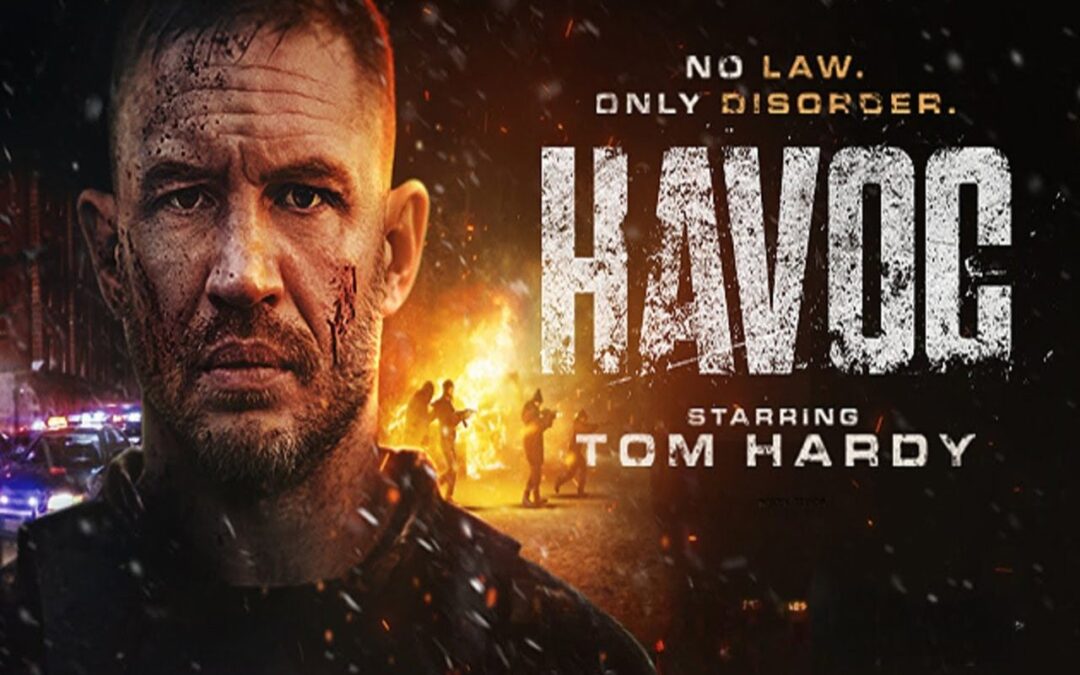You can almost hear the bones splinter before you see them. Gareth Evans, the Welsh wizard who redefined modern action with The Raid films, roars back after a decade-long detour with Havoc, a Netflix-backed urban blitzkrieg that feels less like a movie and more like being locked in a rolling street fight for 107 minutes. Whether that qualifies as praise or a warning depends on how much cartilage you’re willing to sacrifice for an adrenaline spike.
A simple rescue that spirals into bedlam
Set in a rain-slicked, unnamed British city, the film drops us alongside bruised detective Walker (Tom Hardy) mere seconds after a drug deal detonates. The fallout traps a local power broker’s wayward son deep inside the criminal underworld, and Walker is ordered to retrieve the lad before the tabloids sniff blood. That single-line premise quickly mushrooms into a hall-of-mirrors conspiracy involving bent cops, Triad gun-runners and politicians who fund both sides of their war. If you’ve played Max Payne or Grand Theft Auto, you’ll recognise the rules: every new alley promises two exits—one through a hail of bullets, the other through a window.
Hardy, Whitaker and an ensemble of bruisers
Hardy leans into his signature growl and battered-pit-bull physicality, turning Walker into a walking X-ray of half-healed fractures. His dialogue rarely rises above a mutter, but that’s by design; Evans wants fists, elbows and improvised blades to do the talking. Forest Whitaker, meanwhile, brings world-weary gravitas as Lawrence, the Machiavellian fixer who commissions the rescue but might be its author of doom. Timothy Olyphant, Luis Guzmán, and UFC veteran Michelle Waterson round out a rogues’ gallery that looks as if it was cast from police mug shots rather than headshots.
Action as an endurance sport
Evans still blocks violence like a choreographer possessed. A single-take stairwell massacre halfway through the film is destined for YouTube super-cut immortality; it’s equal parts Oldboy corridor and first-person survival horror. Later, a warehouse gun battle plays like a punk-rock symphony—screeching machinery for violins, ricochets for cymbals. Yet there’s a cost to this relentlessness.
By his own past standard, Evans now seems less interested in the balletic clarity that made The Raid’s silat duels so readable. Instead, he opts for crunchy, handheld chaos that often obscures the geography of a fight even as it maximises the pain. Critics have labelled the approach “operatic violence” and “virtuosic brutality,” descriptors that double as both compliment and caution.
Style thrives, story limps
Here’s the rub: when the guns reload, the script reloads clichés. Evans also wrote the screenplay, and you can sense where his keyboard hand drifted back toward the storyboard. Plot revelations arrive exactly when you expect them; character backstories barely exist outside of a smattering of whispered expositional lines. The result is a pulse-quickening experience that feels oddly empty once your heart rate stabilises, a respectable but well below the near-mythic status of Evans’ earlier work.
Technical firepower
Cinematographer Matt Flannery shoots with sodium-lamp grit, bathing alleyways in lurid orange while letting neon signage strobe across bloodied faces. The score by Aria Prayogi (another alumnus of The Raid) layers gamelan gongs beneath distorted industrial bass, crafting a soundscape that rattles the skull even when subtitles replace dialogue. Editors Sara Jones and Matt Platts-Mills slice scenes at a breathless clip, less cross-cutting, more cross-slashing so that even a two-minute breather inside a derelict flat carries the tension of an imminent breach.
Also Read…
Running Point Review; Is Netflix’s New Sports Comedy Drama Worth the Hype?
Comparison with the legend that preceded itRunning Point Review; Is Netflix’s New Sports Comedy Drama Worth the Hype?
Is Havoc the heir to The Raid throne? Not quite. Evans’ Indonesian duology balanced operatic carnage with a stripped-down purity that made every swing of the machete feel inevitable. Havoc wants to replicate that magic in English, with a Hollywood-grade cast and Netflix’s bottomless wallet, but the translation favours spectacle over cohesion. Where The Raid 2 used a 150-minute sprawl to enrich its mythology, Havoc compresses multiple crime-saga archetypes into a narrative that can barely hold them.
Stream or skip?
Ultimately, Havoc succeeds on its own, brutal terms. It’s the movie equivalent of a heavy-bag workout: repetitive, punishing, occasionally euphoric—and forgettable once the sweat dries. For action purists, that might be enough. For viewers hunting well-drawn characters or a plot twist that lingers past the credits, there’s little to salvage beyond shattered glass and a ringing in the ears.
Still, Evans remains a director worth following into the dark. Even at half strength, his command of rhythm and impact eclipses most studio tent-poles. Havoc may never join the action canon, but as a midnight stream with the lights off and the volume high, it lands like a steel toe to the solar plexus. Just keep the ice pack handy.
Writer – Subham Choudhary

